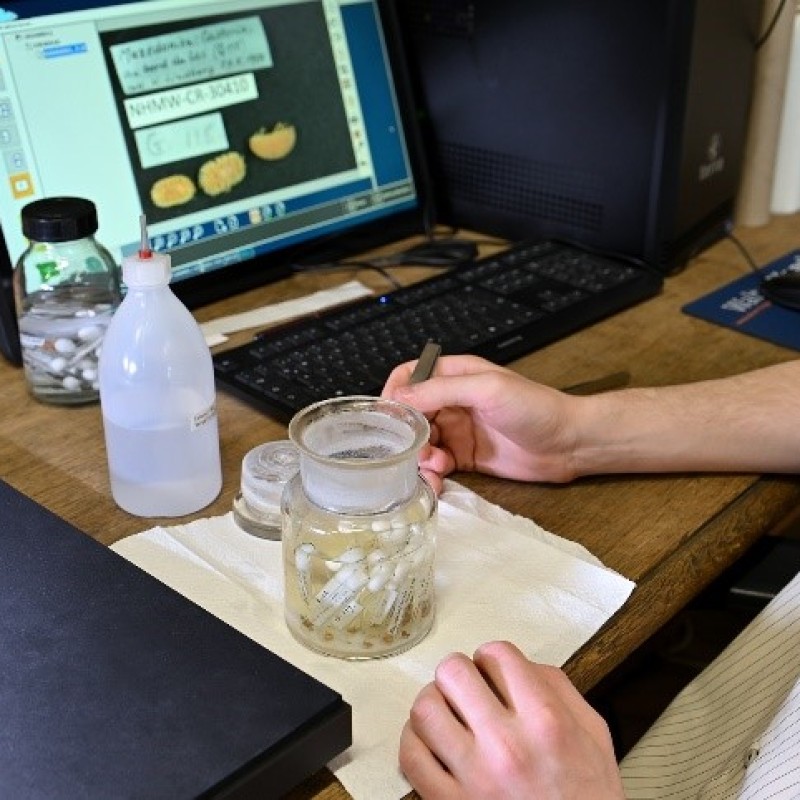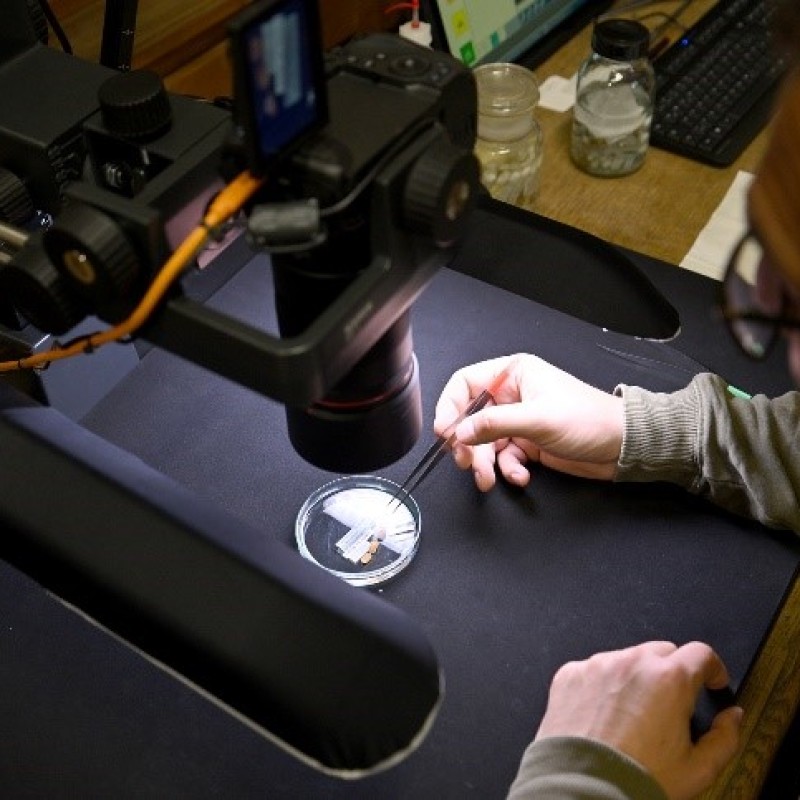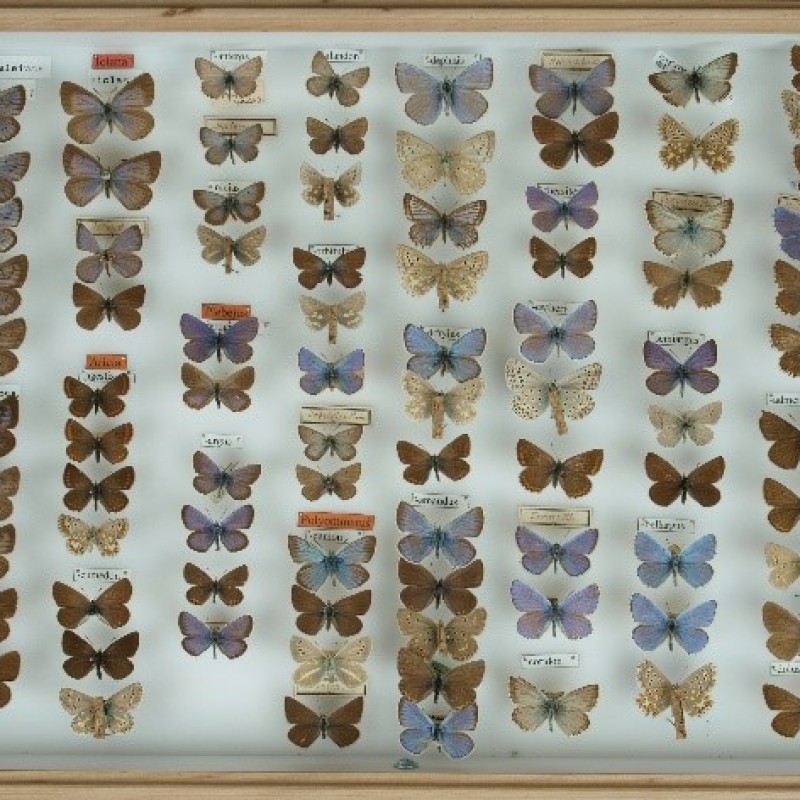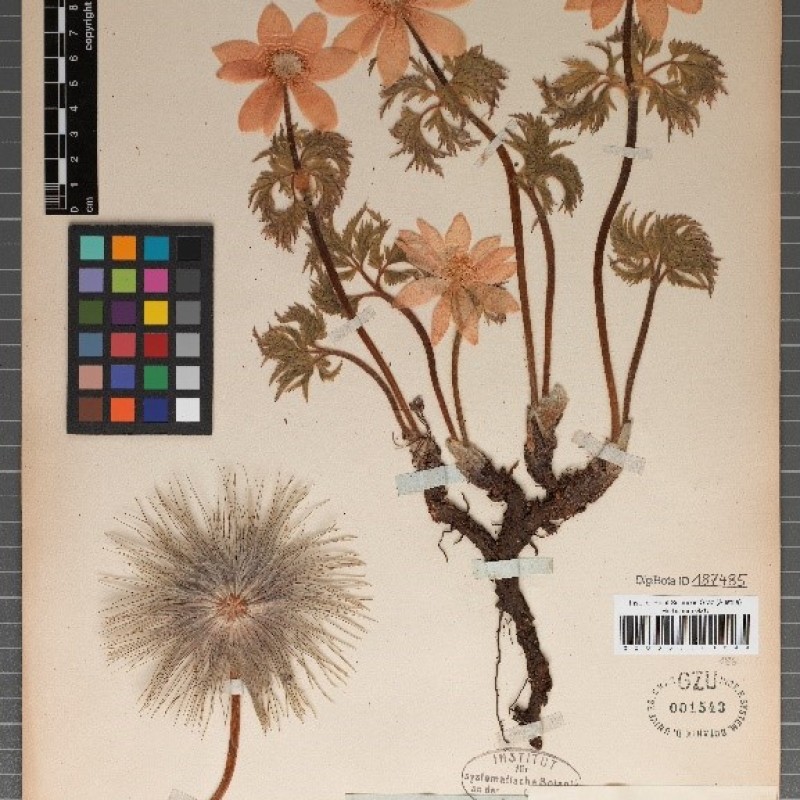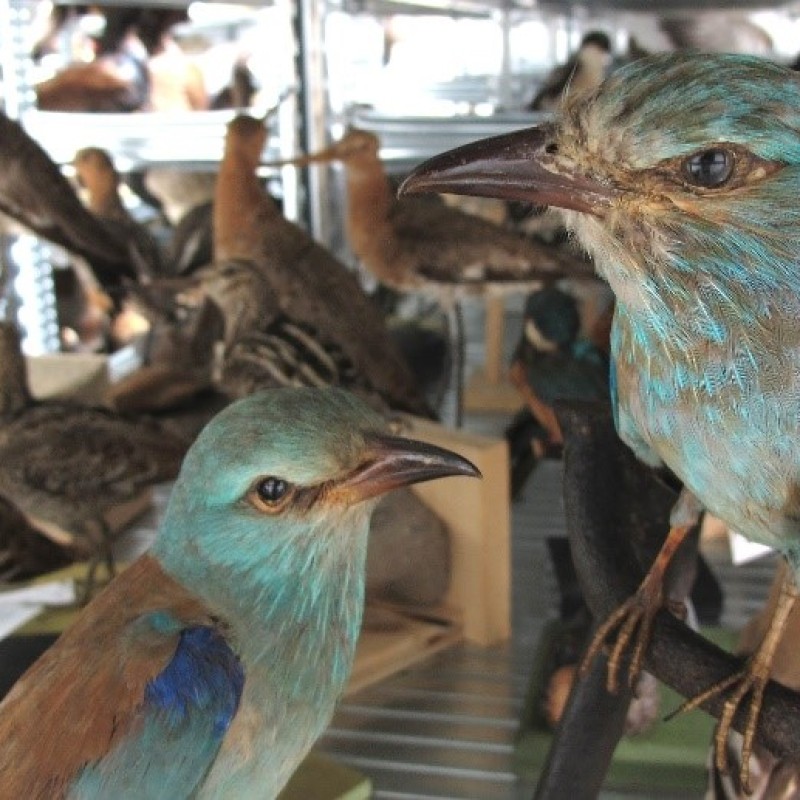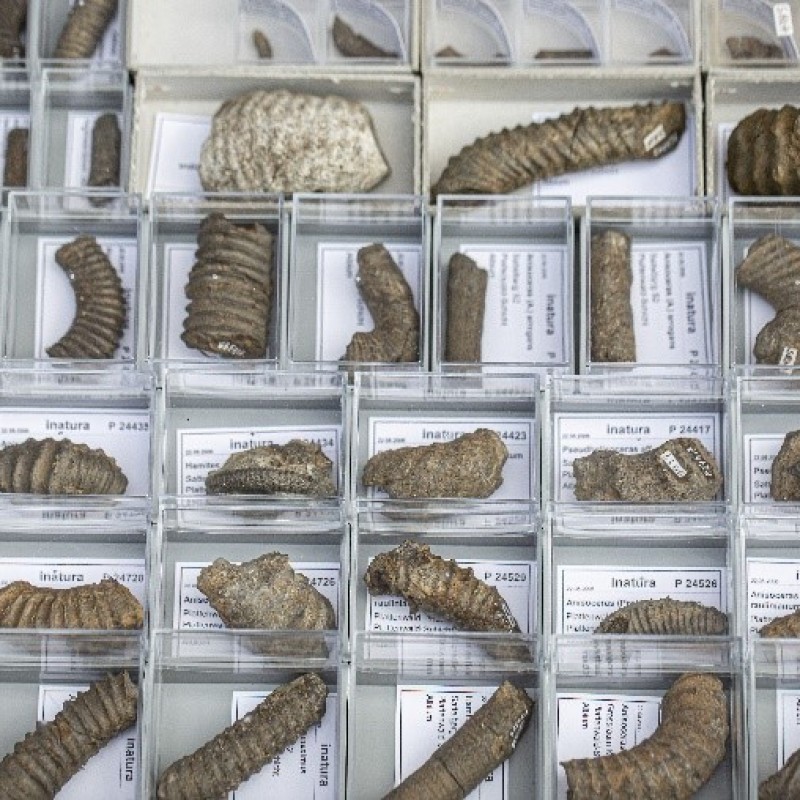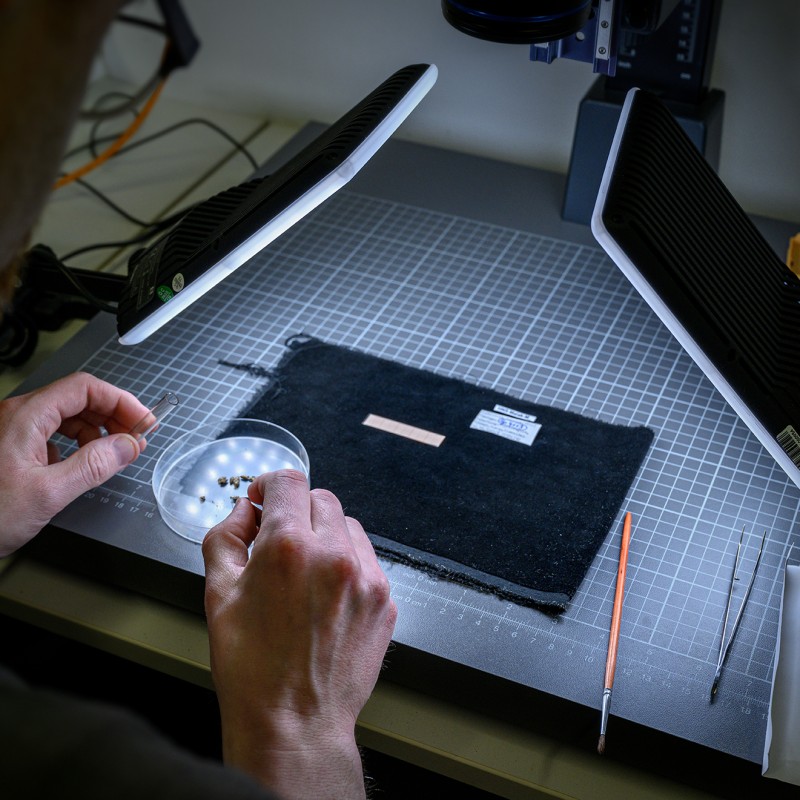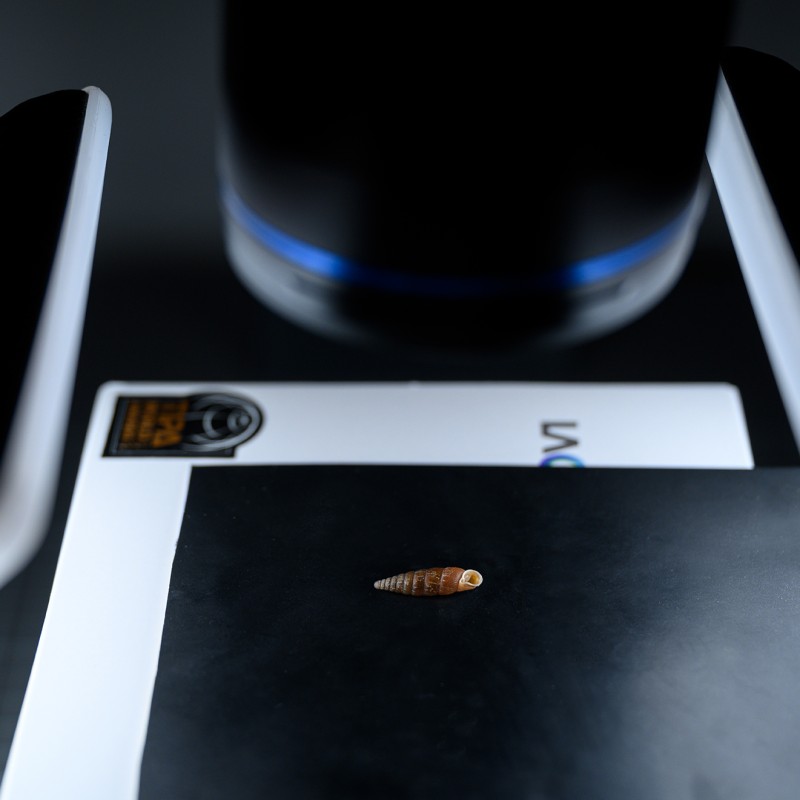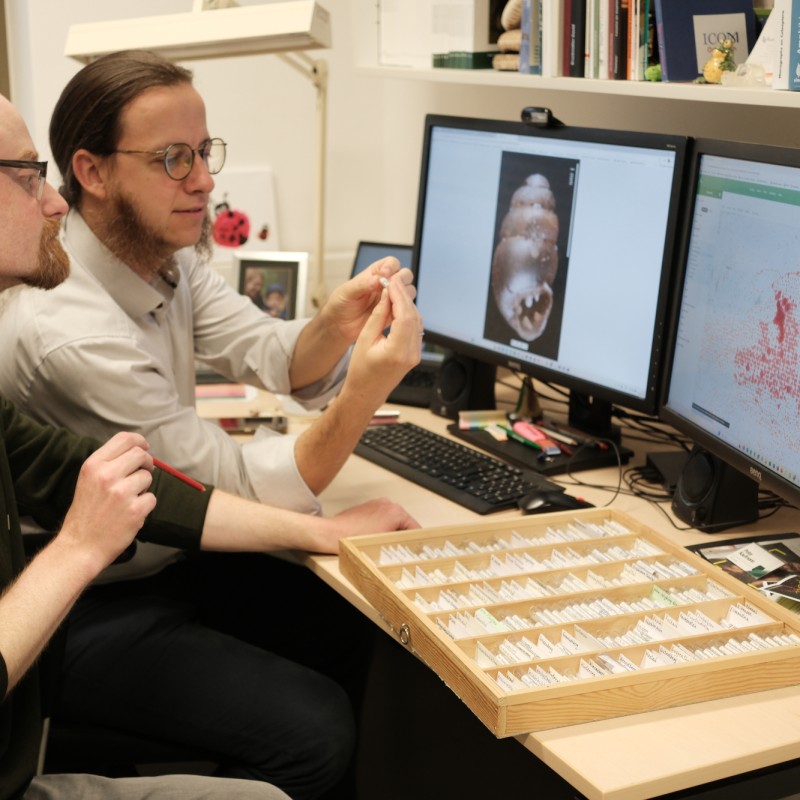Austria's Natural Sciences 2.0: Digital - Innovative - European
11. September 2025
Austria becomes part of the European research infrastructure for scientific collections DiSSCo (Distributed System
of Scientific Collections)
Press conference on Thursday, 11 September 2025, 9 a.m., in the lecture hall of the NHW Vienna
Press conference on Thursday, 11 September 2025, 9 a.m., in the lecture hall of the NHW Vienna
Program
9:00 a.m.:
Welcome and introduction to the topic
Dr Katrin Vohland, Director General and Scientific Director, NHM Vienna
09:05 – 09:15:
The importance of research infrastructures and especially OSCA/DiSSCo for Austria
Eva-Maria Holzleitner, BSc, Federal Minister for Women, Science and Research (BMFWF)
09:15 – 09:25:
OSCA - Insight, Overview and Outlook
Mag. Heimo Rainer, Project Manager OSCA and Director of the Botanical Department, NHM Vienna
09:25 – 09:35:
Added value of OSCA from the perspective of the state museums
Dr. Robert Lindner,Director, House of Nature (Salzburg)
09:35 – 09:45:
Added value of OSCA from the perspective of university collections
Dr. Ronald Maier, Vice Rector for Digitalization and Knowledge Transfer, University of Vienna
09:45 – approx. 09:55:
DiSSCo's vision at European level
Dr. Dimitris Koureas, Managing Director, Naturalis Biodiversity Center (Leiden, Netherlands)
10:00 a.m.: Q & A
Austria has been a champion of the digital opening of scientific collections in Europe for many years. As a best practice example, the country will now become an important part of the major European research infrastructure DiSSCo (Distributed System of Scientific Collections) in 2025.
DiSSCo is a European research infrastructure that digitizes and standardizes all scientific resources and thus creates cross-border access to scientific knowledge in Europe. Thanks to the newly created virtual knowledge database, collections can be found throughout Europe and used efficiently. As the largest European network of natural history museums, botanical gardens, universities and other collection-leading research institutions to date, DiSSCo offers innovative added value for the transfer of knowledge in science, research, society and the business world.
In Austria, the digitisation of scientific collections is organized in the context of the DiSSCO infrastructure through the Open Scientific Collections Austria (OSCA) consortium. OSCA is an association of Austrian museums and universities dedicated to the digital opening of the Austrian natural science collections.
OSCA accompanies the digital provision of its more than 56 million collection objects and represents Austria in Europe as an interface to the European infrastructure DiSSCo. The OSCA consortium is coordinated by the Natural History Museum Vienna (NHM). During the initial phase, the BMKOES (now BMWKMS) supported the OSCA consortium. Since January 2025, the consortium has been funded by the Federal Ministry of Women, Science and Research (BMFWF).
Austria is thus part of the vision that sees European scientific collections at the center of data-based scientific excellence and innovation in the areas of biodiversity and environmental research, climate change, food security and health.
"Investing in research infrastructures such as DiSSCo is investing in Europe's future. These institutions make our knowledge visible, accessible and turn it into an engine for innovation and social development. By digitising our collections, we are creating the basis for evidence-based research into biodiversity, climate and health – and preserving our knowledge for future generations. At the same time, we are strengthening the basis for a well fortified democracy based on facts and scientific knowledge.”
Eva-Maria Holzleitner, BSc, Federal Minister for Women, Science and Research (BMFWF)
"We are very proud that the Austrian government sees the great potential of all its natural history collections – which are preserved in museums, universities and foundations – for Europe's future viability and therefore supports its digital accessibility. The OSCA – Open Scientific Collections Austria – Consortium acts as a driver of digital transformation while strengthening competences in all institutions. As a future contribution and part of the European research infrastructure DiSSCo, this initiative demonstrates the power of cooperation: We all learn from each other!”
Dr. Katrin Vohland, Director General and Scientific Director, NHM Vienna
The digitization of scientific collections began in the late 1980s and early 1990s, mainly in the form of digital catalogues. With the modernization of processes for mass digitization and other tools, not least AI-supported processes and robotics, even large collection holdings can undergo digital transformation.
The cooperation of the Austrian institutions in OSCA and Austria's participation in DiSSCo substantially promotes the availability of the objects in the common national data network and throughout Europe. This also makes the contribution of each individual institution in OSCA visible across institutional and national boundaries and enables an important Austrian contribution to the European Research Area via DiSSCo. All this is the result of decades of cooperation and agreement on common goals.
Mag. Heimo Rainer, Project Manager OSCA and Director of the Botanical Department, NHM Vienna
‘As in most other state museums, the collections at the Haus der Natur house important and scientifically valuable evidence. Digital availability is an imperative of the hour to preserve the scientific value of our collections while conserving resources. Networks such as OSCA and DISSCo enable us to become part of a common European research area, despite having fewer human resources than the major research museums. This international collaboration helps us to showcase treasures in our collections that might otherwise go undiscovered. This highlights and increases the value of our collections.”
Dr. Robert Lindner, Director Haus der Natur, Salzburg
“The OSCA project (Open Scientific Collections Austria) makes an important contribution to the University of Vienna’s digitalization strategy and, at the same time, to the University of Vienna’s strategic priorities, in particular in the areas of ‘Digital and data-based transformations of science and society’, ‘Systems of Life – Fundamentals of Life’ and ‘Climate, Environment, Sustainability’. By jointly digitizing scientific collections of Austrian institutions and networking them via European platforms such as DiSSCo, we create a European research infrastructure of international relevance and visibility.
Austria’s largest university herbarium, for instance, with its approximately 1.5 million specimens from all plant and fungal groups, including more than 15,000 types, contains important historical collections with specimens from all over the world, with a particular focus on South-Eastern Europe, the Alpine region and China. The zoological collection, on the other hand, houses one of Austria’s most extensive collections of anatomical, embryological and histological collections of vertebrate animals.
OSCA/DISSCo strengthens cooperation between Austrian institutions, opens up new opportunities for interdisciplinary and European cooperation and also provides central data resources for global challenges such as biodiversity, climate and sustainability. The project thus contributes not only to the international visibility and competitiveness of the Austrian and European research landscape, but also to the implementation of the strategic objectives of the University of Vienna’.
Dr. Ronald Maier, Vice Rector for Digitalization and Knowledge Transfer, University of Vienna
‘Austria’s decision to organize its national collections community through OSCA and connect it with DiSSCo is a practical step to deliver more value from Austria’s collections and expertise to science and society. DiSSCo’s goal is to build end-to-end, high-throughput knowledge systems for the natural world that combine curatorial expertise with modern technologies. OSCA serves as Austria’s national node, ensuring that Austrian data and know-how both contribute to—and benefit from—the European infrastructure’.
Dr. Dimitris Koureas, Managing Director, Naturalis Biodiversity Center (Leiden, Netherlands)
Background
Research infrastructures are the backbone of scientific innovation – and a driver of societal development in a digital world.
The digitisation of scientific collections taps new knowledge, combines Austria’s material heritage with state-of-the-art data standards and makes our cultural and scientific memory globally visible and usable – for research, politics and society.
Investments in high-performance infrastructures such as OSCA (Open Scientific Collections Austria) and DiSSCo (Distributed System of Scientific Collections) secure Austria's position in the European Research Area (ERA). They enable networked cutting-edge research according to FAIR principles, create the basis for innovation and make our knowledge open, accessible and future-proof. Only by linking collections and data can we address global challenges such as biodiversity loss and climate change on an evidence-based basis – and preserve knowledge for future generations.
The aim is to achieve a complete digital catalogue of the Austrian collections, i.e. a 100% inventory of all biological (botanical, zoological), earth science (paleontological, geological, mineralogical, extraterrestrial) and anthropological collection items. In addition, 2D digital copies, in a few cases 3D copies, are to be made of selected objects. An enormous digitization effort is necessary for these strategic goals. In order to determine the necessary costs for this undertaking, estimates of the required working hours and labor costs were made on the basis of experience for the different activities in the different collections. The costs of digitising the almost 56 million objects would amount to approximately €250 million over a period of 10 years.
Natural science collections are a unique asset for science and society. They document life, serve as archives of the Earth, inanimate matter and biodiversity and make it possible to trace adaptation to environmental changes. As a central research infrastructure, they contribute to answering fundamental scientific questions and developing innovative solutions.
However, their use is severely limited by various factors: low level of digitization, lack of a common platform, insufficient linkages of relevant data sources and inconsistent handling. This fragmentation makes it difficult to access and effectively use existing knowledge.
In 2018, the European scientific collections were included in the roadmap of the European Strategy Forum on Research Infrastructures (ESFRI) – as the "Distributed System of Scientific Collections" (DiSSCo). The goal of DiSSCo is to build a powerful infrastructure for data-intensive research. The focus is on the physical objects of the collection and their digitization. Uniform access, common standards and procedures should be established across national borders. All data complies with the FAIR principles (findable, accessible, interoperable and reusable data). With over 200 participating institutions from 23 countries, DiSSCo is the largest European network of natural history museums, botanical gardens, universities and other research institutions running collections to date.
DiSSCo’s preparatory phase started in February 2020 with DiSSCo Prepare. The Natural History Museum Vienna acted as the national node for Austria. This gave rise to a continuous exchange with other institutions such as museums, university collections, monasteries and abbeys, the Federal Environment Agency (with GBIF Austria), and Geosphere Austria. This exchange led to the development of the Open Scientific Collections Austria (OSCA) consortium.
OSCA brings together Austrian museums and universities dedicated to the digital opening of Austria's natural science collections. It accompanies the digitization of its more than 56 million collection objects and represents Austria as an interface to the European infrastructure DiSSCo. The OSCA consortium is coordinated by the Natural History Museum Vienna (NHM). During the initial phase, the consortium was supported by the BMKOES (now BMWKMS).
Main topic
Since January 2025, the consortium has been funded by the Federal Ministry of Women, Science and Research (BMFWF).
Participation in DiSSCo is a clear commitment to Europe, the European Research Area (ERA) and the principles of Open Science. DiSSCo strengthens and structures the ERA, is in line with the European Green Deal and supports the European Commission's goal of making Europe fit for the digital age. Knowledge about biodiversity and geodiversity is gaining importance in the face of global challenges such as biodiversity loss, climate change, resource depletion and global pandemics. Linked open data and FAIR-compliant data provide great added value towards this goal.
By participating in DiSSCo, Austria is part of the vision to position European scientific collections as the core of data-based scientific excellence and innovation – in areas such as biodiversity and environmental research, climate change, food security and health. The use of DiSSCo's services and standards sustainably strengthens the application of the collections in science and society.
The cooperation and exchange within OSCA enabled initial steps to be taken: existing knowledge on digitization has been made accessible, steps have been taken to preserve objects and coordinate the digitization of the associated data, and a modern digital infrastructure has been set up. A central element is the OSCA Portal, which significantly enhances information on digitally accessible objects Austria.
Cross-institutional case studies such as the digitization of the mollusk collections (snails and mussels) or selected endemic species of Austria's flora and fauna have produced practical workflows and established a work plan for the digitization of the Austrian natural science collections. Linking collection objects to other data is another central aspect: OSCA has established a workflow that documents the entire path from collection to DNA barcode with unique and persistent identifiers (PIDs), ensuring a consistent chain of information.
The development of skills in digital transformation and funding programmes such as ‘Digital Cultural Heritage’ have already made Austria’s natural science holdings more visible and usable. However, most of Austria's scientific holdings remain digitally invisible. In 2021, an expert estimate came to the conclusion that the OSCA institutions house approximately 56 million objects, of which approximately 15 million objects are digitally inventoried (28%) and almost 700,000 objects have a digital copy (1%). The aim is to achieve a complete digital catalogue of the Austrian collections, i.e. a 100% inventory of all biological (botanical, zoological), earth science (paleontological, geological, mineralogical, extraterrestrial) and anthropological collection objects. In addition, 2D digital copies, in a few cases 3D copies, are to be made of selected objects. An enormous digitization effort is necessary for these strategic goals. In order to determine the necessary costs for this undertaking, working hours and labor costs were estimated on the basis of experience for the different activities in the different collections. The costs of digitizing the almost 56 million objects would amount to approximately €250 million over a period of 10 years.
Next steps:
Press material for download:
https://www.nhm.at/presse/pressemitteilungen2025/OSCA
Link to the OSCA website:
https://osca.science/
Link to OSCA publication:
https://preprints.arphahub.com/article/169505/list/8/
General request for information:
Mag. Irina Kubadinow
Head of Press & Public Relations, Press Spokesperson
https://www.nhm.at/irina_kubadinow
Tel.: + 43 (1) 521 77 DW 410 | irina.kubadinow@nhm.at
Mag. Nikolett Kertész-Schenk, Bakk. BA MAS
Press officer
https://www.nhm.at/nikolett_kertesz
Tel.: + 43 (1) 521 77 DW 626 | nikolett.kertesz@nhm.at
9:00 a.m.:
Welcome and introduction to the topic
Dr Katrin Vohland, Director General and Scientific Director, NHM Vienna
09:05 – 09:15:
The importance of research infrastructures and especially OSCA/DiSSCo for Austria
Eva-Maria Holzleitner, BSc, Federal Minister for Women, Science and Research (BMFWF)
09:15 – 09:25:
OSCA - Insight, Overview and Outlook
Mag. Heimo Rainer, Project Manager OSCA and Director of the Botanical Department, NHM Vienna
09:25 – 09:35:
Added value of OSCA from the perspective of the state museums
Dr. Robert Lindner,Director, House of Nature (Salzburg)
09:35 – 09:45:
Added value of OSCA from the perspective of university collections
Dr. Ronald Maier, Vice Rector for Digitalization and Knowledge Transfer, University of Vienna
09:45 – approx. 09:55:
DiSSCo's vision at European level
Dr. Dimitris Koureas, Managing Director, Naturalis Biodiversity Center (Leiden, Netherlands)
10:00 a.m.: Q & A
Austria has been a champion of the digital opening of scientific collections in Europe for many years. As a best practice example, the country will now become an important part of the major European research infrastructure DiSSCo (Distributed System of Scientific Collections) in 2025.
DiSSCo is a European research infrastructure that digitizes and standardizes all scientific resources and thus creates cross-border access to scientific knowledge in Europe. Thanks to the newly created virtual knowledge database, collections can be found throughout Europe and used efficiently. As the largest European network of natural history museums, botanical gardens, universities and other collection-leading research institutions to date, DiSSCo offers innovative added value for the transfer of knowledge in science, research, society and the business world.
In Austria, the digitisation of scientific collections is organized in the context of the DiSSCO infrastructure through the Open Scientific Collections Austria (OSCA) consortium. OSCA is an association of Austrian museums and universities dedicated to the digital opening of the Austrian natural science collections.
OSCA accompanies the digital provision of its more than 56 million collection objects and represents Austria in Europe as an interface to the European infrastructure DiSSCo. The OSCA consortium is coordinated by the Natural History Museum Vienna (NHM). During the initial phase, the BMKOES (now BMWKMS) supported the OSCA consortium. Since January 2025, the consortium has been funded by the Federal Ministry of Women, Science and Research (BMFWF).
Austria is thus part of the vision that sees European scientific collections at the center of data-based scientific excellence and innovation in the areas of biodiversity and environmental research, climate change, food security and health.
"Investing in research infrastructures such as DiSSCo is investing in Europe's future. These institutions make our knowledge visible, accessible and turn it into an engine for innovation and social development. By digitising our collections, we are creating the basis for evidence-based research into biodiversity, climate and health – and preserving our knowledge for future generations. At the same time, we are strengthening the basis for a well fortified democracy based on facts and scientific knowledge.”
Eva-Maria Holzleitner, BSc, Federal Minister for Women, Science and Research (BMFWF)
"We are very proud that the Austrian government sees the great potential of all its natural history collections – which are preserved in museums, universities and foundations – for Europe's future viability and therefore supports its digital accessibility. The OSCA – Open Scientific Collections Austria – Consortium acts as a driver of digital transformation while strengthening competences in all institutions. As a future contribution and part of the European research infrastructure DiSSCo, this initiative demonstrates the power of cooperation: We all learn from each other!”
Dr. Katrin Vohland, Director General and Scientific Director, NHM Vienna
The digitization of scientific collections began in the late 1980s and early 1990s, mainly in the form of digital catalogues. With the modernization of processes for mass digitization and other tools, not least AI-supported processes and robotics, even large collection holdings can undergo digital transformation.
The cooperation of the Austrian institutions in OSCA and Austria's participation in DiSSCo substantially promotes the availability of the objects in the common national data network and throughout Europe. This also makes the contribution of each individual institution in OSCA visible across institutional and national boundaries and enables an important Austrian contribution to the European Research Area via DiSSCo. All this is the result of decades of cooperation and agreement on common goals.
Mag. Heimo Rainer, Project Manager OSCA and Director of the Botanical Department, NHM Vienna
‘As in most other state museums, the collections at the Haus der Natur house important and scientifically valuable evidence. Digital availability is an imperative of the hour to preserve the scientific value of our collections while conserving resources. Networks such as OSCA and DISSCo enable us to become part of a common European research area, despite having fewer human resources than the major research museums. This international collaboration helps us to showcase treasures in our collections that might otherwise go undiscovered. This highlights and increases the value of our collections.”
Dr. Robert Lindner, Director Haus der Natur, Salzburg
“The OSCA project (Open Scientific Collections Austria) makes an important contribution to the University of Vienna’s digitalization strategy and, at the same time, to the University of Vienna’s strategic priorities, in particular in the areas of ‘Digital and data-based transformations of science and society’, ‘Systems of Life – Fundamentals of Life’ and ‘Climate, Environment, Sustainability’. By jointly digitizing scientific collections of Austrian institutions and networking them via European platforms such as DiSSCo, we create a European research infrastructure of international relevance and visibility.
Austria’s largest university herbarium, for instance, with its approximately 1.5 million specimens from all plant and fungal groups, including more than 15,000 types, contains important historical collections with specimens from all over the world, with a particular focus on South-Eastern Europe, the Alpine region and China. The zoological collection, on the other hand, houses one of Austria’s most extensive collections of anatomical, embryological and histological collections of vertebrate animals.
OSCA/DISSCo strengthens cooperation between Austrian institutions, opens up new opportunities for interdisciplinary and European cooperation and also provides central data resources for global challenges such as biodiversity, climate and sustainability. The project thus contributes not only to the international visibility and competitiveness of the Austrian and European research landscape, but also to the implementation of the strategic objectives of the University of Vienna’.
Dr. Ronald Maier, Vice Rector for Digitalization and Knowledge Transfer, University of Vienna
‘Austria’s decision to organize its national collections community through OSCA and connect it with DiSSCo is a practical step to deliver more value from Austria’s collections and expertise to science and society. DiSSCo’s goal is to build end-to-end, high-throughput knowledge systems for the natural world that combine curatorial expertise with modern technologies. OSCA serves as Austria’s national node, ensuring that Austrian data and know-how both contribute to—and benefit from—the European infrastructure’.
Dr. Dimitris Koureas, Managing Director, Naturalis Biodiversity Center (Leiden, Netherlands)
Background
Research infrastructures are the backbone of scientific innovation – and a driver of societal development in a digital world.
The digitisation of scientific collections taps new knowledge, combines Austria’s material heritage with state-of-the-art data standards and makes our cultural and scientific memory globally visible and usable – for research, politics and society.
Investments in high-performance infrastructures such as OSCA (Open Scientific Collections Austria) and DiSSCo (Distributed System of Scientific Collections) secure Austria's position in the European Research Area (ERA). They enable networked cutting-edge research according to FAIR principles, create the basis for innovation and make our knowledge open, accessible and future-proof. Only by linking collections and data can we address global challenges such as biodiversity loss and climate change on an evidence-based basis – and preserve knowledge for future generations.
The aim is to achieve a complete digital catalogue of the Austrian collections, i.e. a 100% inventory of all biological (botanical, zoological), earth science (paleontological, geological, mineralogical, extraterrestrial) and anthropological collection items. In addition, 2D digital copies, in a few cases 3D copies, are to be made of selected objects. An enormous digitization effort is necessary for these strategic goals. In order to determine the necessary costs for this undertaking, estimates of the required working hours and labor costs were made on the basis of experience for the different activities in the different collections. The costs of digitising the almost 56 million objects would amount to approximately €250 million over a period of 10 years.
Natural science collections are a unique asset for science and society. They document life, serve as archives of the Earth, inanimate matter and biodiversity and make it possible to trace adaptation to environmental changes. As a central research infrastructure, they contribute to answering fundamental scientific questions and developing innovative solutions.
However, their use is severely limited by various factors: low level of digitization, lack of a common platform, insufficient linkages of relevant data sources and inconsistent handling. This fragmentation makes it difficult to access and effectively use existing knowledge.
In 2018, the European scientific collections were included in the roadmap of the European Strategy Forum on Research Infrastructures (ESFRI) – as the "Distributed System of Scientific Collections" (DiSSCo). The goal of DiSSCo is to build a powerful infrastructure for data-intensive research. The focus is on the physical objects of the collection and their digitization. Uniform access, common standards and procedures should be established across national borders. All data complies with the FAIR principles (findable, accessible, interoperable and reusable data). With over 200 participating institutions from 23 countries, DiSSCo is the largest European network of natural history museums, botanical gardens, universities and other research institutions running collections to date.
DiSSCo’s preparatory phase started in February 2020 with DiSSCo Prepare. The Natural History Museum Vienna acted as the national node for Austria. This gave rise to a continuous exchange with other institutions such as museums, university collections, monasteries and abbeys, the Federal Environment Agency (with GBIF Austria), and Geosphere Austria. This exchange led to the development of the Open Scientific Collections Austria (OSCA) consortium.
OSCA brings together Austrian museums and universities dedicated to the digital opening of Austria's natural science collections. It accompanies the digitization of its more than 56 million collection objects and represents Austria as an interface to the European infrastructure DiSSCo. The OSCA consortium is coordinated by the Natural History Museum Vienna (NHM). During the initial phase, the consortium was supported by the BMKOES (now BMWKMS).
Main topic
Since January 2025, the consortium has been funded by the Federal Ministry of Women, Science and Research (BMFWF).
Participation in DiSSCo is a clear commitment to Europe, the European Research Area (ERA) and the principles of Open Science. DiSSCo strengthens and structures the ERA, is in line with the European Green Deal and supports the European Commission's goal of making Europe fit for the digital age. Knowledge about biodiversity and geodiversity is gaining importance in the face of global challenges such as biodiversity loss, climate change, resource depletion and global pandemics. Linked open data and FAIR-compliant data provide great added value towards this goal.
By participating in DiSSCo, Austria is part of the vision to position European scientific collections as the core of data-based scientific excellence and innovation – in areas such as biodiversity and environmental research, climate change, food security and health. The use of DiSSCo's services and standards sustainably strengthens the application of the collections in science and society.
The cooperation and exchange within OSCA enabled initial steps to be taken: existing knowledge on digitization has been made accessible, steps have been taken to preserve objects and coordinate the digitization of the associated data, and a modern digital infrastructure has been set up. A central element is the OSCA Portal, which significantly enhances information on digitally accessible objects Austria.
Cross-institutional case studies such as the digitization of the mollusk collections (snails and mussels) or selected endemic species of Austria's flora and fauna have produced practical workflows and established a work plan for the digitization of the Austrian natural science collections. Linking collection objects to other data is another central aspect: OSCA has established a workflow that documents the entire path from collection to DNA barcode with unique and persistent identifiers (PIDs), ensuring a consistent chain of information.
The development of skills in digital transformation and funding programmes such as ‘Digital Cultural Heritage’ have already made Austria’s natural science holdings more visible and usable. However, most of Austria's scientific holdings remain digitally invisible. In 2021, an expert estimate came to the conclusion that the OSCA institutions house approximately 56 million objects, of which approximately 15 million objects are digitally inventoried (28%) and almost 700,000 objects have a digital copy (1%). The aim is to achieve a complete digital catalogue of the Austrian collections, i.e. a 100% inventory of all biological (botanical, zoological), earth science (paleontological, geological, mineralogical, extraterrestrial) and anthropological collection objects. In addition, 2D digital copies, in a few cases 3D copies, are to be made of selected objects. An enormous digitization effort is necessary for these strategic goals. In order to determine the necessary costs for this undertaking, working hours and labor costs were estimated on the basis of experience for the different activities in the different collections. The costs of digitizing the almost 56 million objects would amount to approximately €250 million over a period of 10 years.
Next steps:
- Building a countrywide Austrian infrastructure, acting as a data aggregation hub that aggregates digitized documents and serves as a national data node.
- Acquisition of funds from national and European sponsors for the Austrian-wide digitization of the natural science collections.
- Making data from Austrian institutions visible in European and global domain-specific portals.
- Harmonization of data flows from Austrian institutions with biological and earth science collection objects.
Press material for download:
https://www.nhm.at/presse/pressemitteilungen2025/OSCA
Link to the OSCA website:
https://osca.science/
Link to OSCA publication:
https://preprints.arphahub.com/article/169505/list/8/
General request for information:
Mag. Irina Kubadinow
Head of Press & Public Relations, Press Spokesperson
https://www.nhm.at/irina_kubadinow
Tel.: + 43 (1) 521 77 DW 410 | irina.kubadinow@nhm.at
Mag. Nikolett Kertész-Schenk, Bakk. BA MAS
Press officer
https://www.nhm.at/nikolett_kertesz
Tel.: + 43 (1) 521 77 DW 626 | nikolett.kertesz@nhm.at



